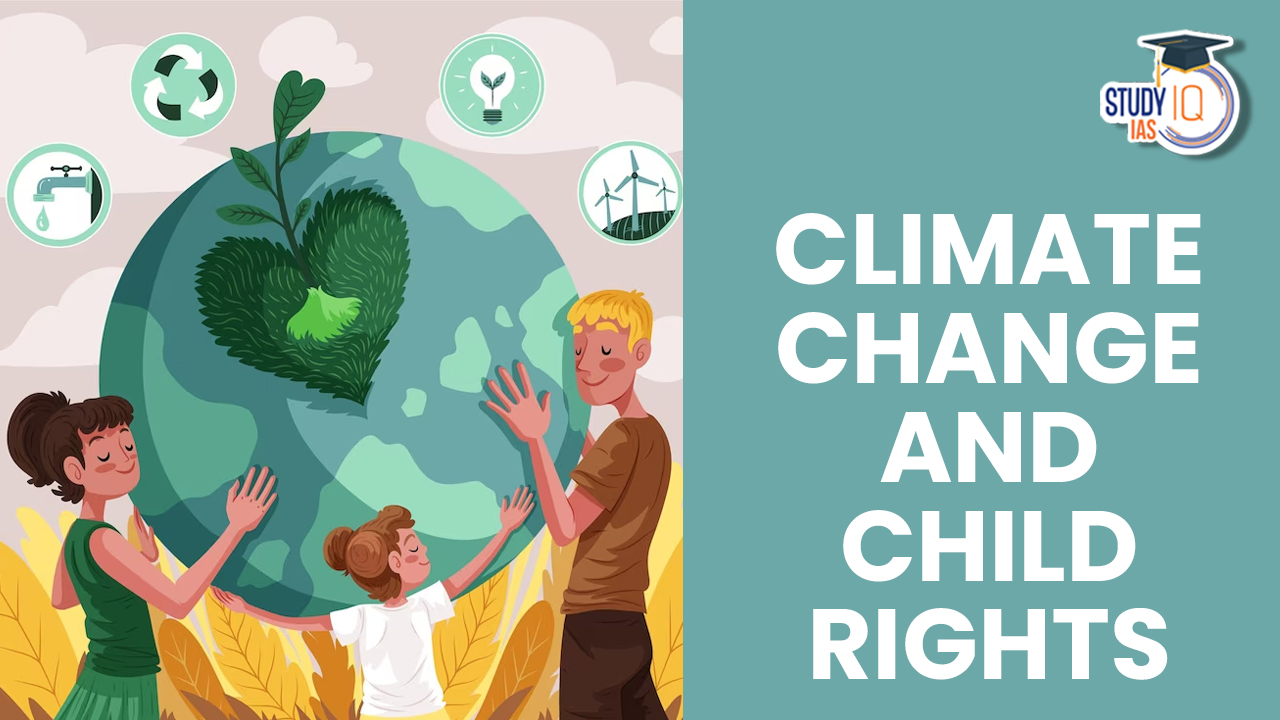Table of Contents
Context: Youngsters from Portugal have sued 32 European governments (including the U.K., Russia and Turkey) at the European Court of Human Rights in France’s Strasbourg relating to their climate change actions.
More on News:
- The lawsuit, filed in 2020, revolves around the argument that several European governments, including Portugal, have failed to take sufficient action against the climate crisis.
- The failure to meet climate emission goals, consistent with the Paris Agreement target of limiting global warming under 1.5°C, infringes upon their fundamental rights protected under the European Convention on Human Rights.
- The lawsuit specifically points out violations of rights such as the right to life, the right to be free from inhuman or degrading treatment, the right to privacy and family life, and the right to be free from discrimination.
- The young plaintiffs assert that the climate crisis is negatively impacting their physical and mental health, restricting their ability to live their lives without fear.
- The legal action calls for urgent and drastic measures, including rapid escalation of emissions reductions, cutting the production of fossil fuels, and cleaning up global supply chains.
Climate change and Child Rights:
- Child Mortality and Health Impacts:
- Rising temperatures contribute to heatwaves that are particularly dangerous for young children, who struggle to regulate their body temperature effectively.
- Additionally, climate change leads to water and vector-borne diseases, such as malaria and diarrhoea.
- Children under the age of 5 already bear the global burden of these diseases, accounting for almost 80% of all deaths from malaria in 2014.
- By 2030, an additional 60,000 deaths from malaria and 48,000 deaths from diarrhoeal disease among children under 15 are anticipated due to climate change.
- Mortality due to Disasters:
- Over half a billion children live in areas with extremely high risk of flooding.
- 115 million children are at high or extremely high risk from tropical cyclones, and almost 160 million are exposed to high or extremely high drought severity
- By 2100, 75% of the world’s people are projected to be exposed to heatwaves so extreme they can kill.
- Climate change is expected to lead to an additional 7.5 million children under the age of 5 who are moderately or severely stunted by 2030.
- Diarrhoeal disease is another leading cause of death among children, and is also set to increase as a result of drought, flooding and changing precipitation patterns, threatening safe water supplies and hygiene practices.
- By 2030, climate-related increases in diarrhoeal disease are anticipated to lead to the death of an additional 48,000 children under the age of 15.
- Nutrition and Development:
- Climate change impacts food security, causing crop failures and decreasing the nutritional value of staple crops.
- Undernutrition, which is already a significant concern, becomes exacerbated, leading to stunted growth in children.
- The WHO estimates nearly 95,000 additional deaths per year due to undernutrition in children under 5 by 2030, with an additional 24 million undernourished children expected by 2050.
- Undernutrition in the first two years of life can lead to irreversible stunting, with negative effects on children’s physical and cognitive development, impacting their health, educational performance, and economic productivity later in life.
- Educational Disruptions:
- Extreme weather events destroy schools, hindering access to education.
- Additionally, climate-related impacts on nutrition and health affect children’s ability to learn, impairing their educational performance.
- Climate stress-induced loss of family livelihoods can force children into labour, impacting their education negatively.
- Consequently, there is a rise in child labor and child marriage due to these disruptions, violating children’s rights to education and protection.
- Vulnerability in Displacement:
- Climate change-induced migration and displacement disrupt family networks, leaving young children, particularly those aged 0-3, vulnerable and often alone or in the care of young siblings.
- Families moving to urban areas due to climate change may lead to child labour as children are forced to work.
- This migration-induced vulnerability impacts children’s overall well-being and safety.
- Disproportionate Impact on Marginalised Groups:
- Marginalized children, including girls, poor children, indigenous children, minorities, and children with disabilities, face the worst consequences of climate change.
- Girls are often pulled out of school for household tasks, and they are at higher risk of domestic violence and exploitation after climate-related disasters.
- Poor families, already vulnerable, are more likely to live in areas highly exposed to climate change impacts, increasing their vulnerability.
- Insufficient Representation in Climate Policy:
- Children are often excluded from key policy processes and climate change negotiations.
- While there is increased recognition of youth in these processes, children’s specific concerns and needs are often overlooked.
- The lack of representation hinders the integration of children’s rights into climate policies and action.
- Limited Access to Environmental Education:
-
- Incomplete implementation of states’ obligations under the UN Child Rights Crisis hampers the capacity of children, especially the marginalized, to contribute meaningfully to climate change discourse.
- Environmental and climate change education is crucial for empowering children, enabling them to protect themselves from climate-related threats, voice their concerns, and seek remedies for harm.
Way Forward:
- Climate Adaptation and Resilience: Allocate more resources to adapt vital services, like water, sanitation, healthcare, and education, to withstand climate challenges.
- Reduce Greenhouse Gas Emissions: Countries should commit to reducing emissions by at least 45% (compared to 2010 levels) by 2030 to limit global warming to no more than 1.5 degrees Celsius.
- Climate Education and Green Skills: Provide climate education and skills to empower children to understand and address environmental challenges.
- Young People in Decision-Making: Engage young people in all levels of climate-related decision-making, from local to international forums.
- Children as Agents of Change: Encourage


 SSC CGL Exam 2025 Apply Online Starts Ap...
SSC CGL Exam 2025 Apply Online Starts Ap...
 Daily Quiz 19 April 2025
Daily Quiz 19 April 2025
 Vehicle-to-Grid (V2G) Technology and its...
Vehicle-to-Grid (V2G) Technology and its...





















